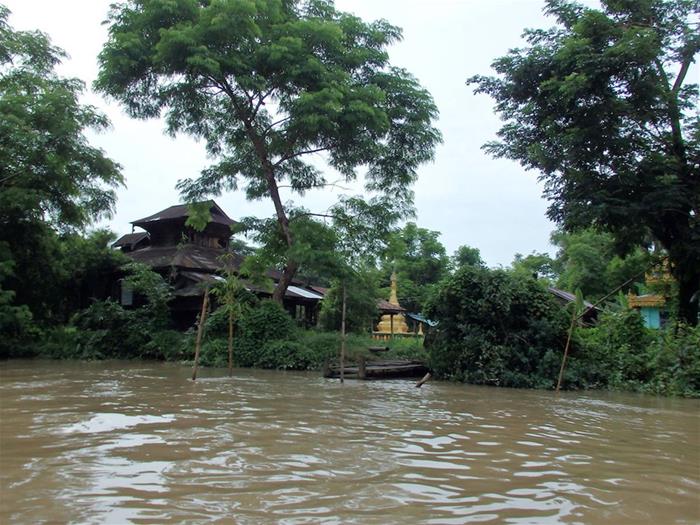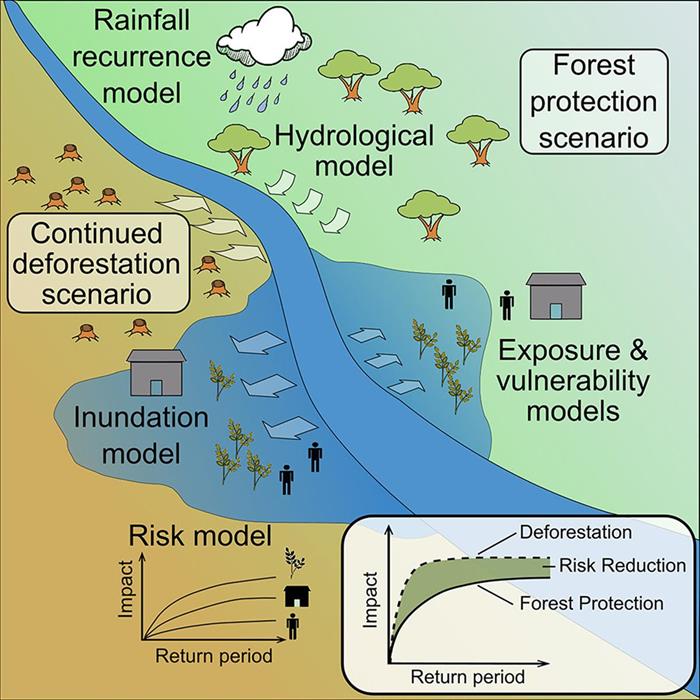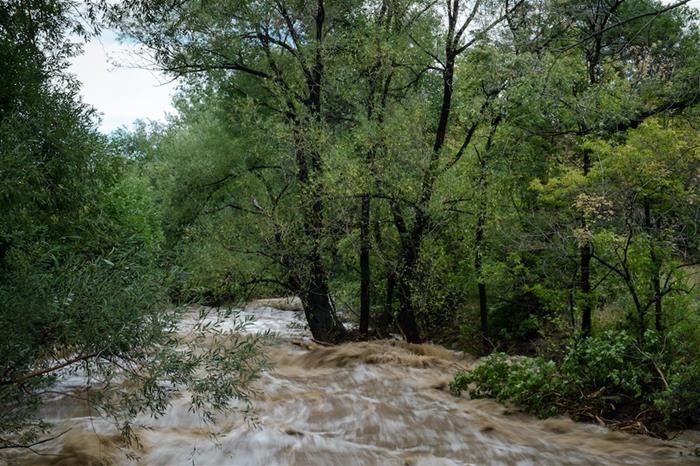Forests help us in many ways. They preserve biodiversity, combat climate change, and even protect us from floods. However, quantifying the value of these benefits has been a challenge for many years.
Scientists from the Earth Observatory of Singapore (EOS) have found a way to evaluate the impacts of nature-based solutions, such as forest protection, on flood risk. In a new study published in One Earth, they show that protecting forests from deforestation in Myanmar’s Chindwin River basin could reduce the economic and human costs of floods by 14 per cent, saving US$1 million in flood-losses annually and protecting 30,000 people in the next decade.

Myanmar is regularly affected by floods (Source: Mohigan/Wikimedia Commons)
"Scientists have known for a long time that forests affect the volume and timing of floodwaters, in addition to other environmental benefits," said Assistant Professor Perrine Hamel, an EOS Principal Investigator who co-led the study. “Yet, the value of flood-related benefits often remains unclear as valuation requires multiple types of expertise including hydrology and hydraulics, economics and risk analysis.”
The new study presents a framework that quantifies the impacts of nature-based solutions, such as forests, on protecting people, buildings, and agriculture from floods of different scales. This framework produces metrics that enable us to directly compare nature-based solutions with other flood mitigation measures such as floodwalls and levees. Such comparisons will help manage future flooding, which is an increasing issue due to climate change and land-use changes.

The new framework combines a range of parameters to quantify the benefits of forests on flood risk reduction (Source: David Lallemant/One Earth, graphic by Mariano Balbi)
"Flood risk management has been biased towards 'grey infrastructure' whose protective capacity is easily measured. We demonstrate that nature-based flood risk reduction can likewise be quantified using the same metrics," said Asst. Prof David Lallemant, a Principal Investigator at EOS who also co-led the study.
In the Chindwin River basin, this study shows that nature-based solutions are most effective against small storms. Because these small storms are frequent, they are the largest contributors to the overall flood impact. Current flood risk assessments, which focus on large catastrophic floods, are therefore neglecting the important benefits of nature-based solutions.

Forests play a major role in reducing the impacts of floods (Source: Jeremiah LaRocco/Flickr)
"While both grey and green infrastructure will be needed to face the challenge of coastal and riverine flooding, now both solutions can be put on the same ground, and the most effective course of action can be taken," said Asst. Prof Lallemant.

The Yolo bypass combines nature-based solutions and grey infrastructure to protect the communities of the Sacramento valley in the US from flooding (Source: USFWS Pacific Southwest Region/Flickr)
The framework currently focuses on the benefits of forests to reduce flood risk, but it can be adapted to evaluate other nature-based solutions, which is paving the way for better integration of nature-based solutions in disaster risk reduction strategies.
Other researchers who contributed to this work include Mariano Balbi from the University of Buenos Aires, Raphael Schmitt from Stanford University and Natural Capital Project, Tian Ning Lim from the Asian School of the Environment at Nanyang Technological University, and Shelly Win from Yangon Institute of Technology.
This work was funded by the Singapore National Research Foundation, the Nanyang Technological University, the Stanford Woods Institute for the Environment, the Stanford Urban Resilience Initiative, the Natural Capital Project, the Earth Observatory of Singapore, and the Peruilh Scholarship from the School of Engineering of the University of Buenos Aires.